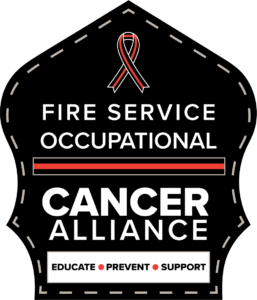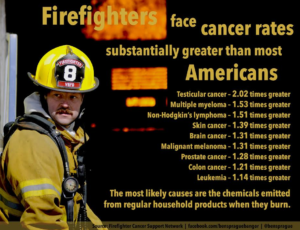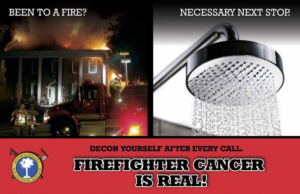Updated June 1, 2019. The National Fire Operations Reporting System (NFORS) Exposure Tracker app is available for firefighters to download as a way to log work-related exposures, the data from which will help researchers better understand how occupational cancers and other hazards are contracted, according to a press release from the International Association of Fire Fighters (IAFF).
This app should prove to be a useful tool for firefighters, but every firefighter still needs to know and understand the “why” concerning documentation of exposures.
By: Robert Avsec, Executive Fire Officer
Now I’m not going to call myself a prophet or anything, but in August 2017 I wrote a piece for FireRescue1.com  entitled, Software to implement and manage your fire department’s health and wellness program, and in that article I wrote that a fire department’s Wellness and Fitness Initiative (WFI) should have three goals [1]:
entitled, Software to implement and manage your fire department’s health and wellness program, and in that article I wrote that a fire department’s Wellness and Fitness Initiative (WFI) should have three goals [1]:
- Improve the quality of life for safety personnel;
- Create a working environment conducive to maintaining healthy and physically fit firefighters; and
- Reduce worker’s compensation costs and lost workdays.
Beyond those goals, I added my own 4th goal: creating an employee or member health and wellness record that can withstand the scrutiny of insurance companies, and state and local governments.
Back in August 2017, I believed that scrutiny would surely come as more firefighters seek to claim coverage for cancer treatments under firefighter cancer presumption laws. Today, 33 states in the U.S. and every Canadian province have some version of firefighter cancer presumption legislation on the books[2].
More recently, President Donald Trump just signed into federal law the Firefighter Cancer Registry Act of 2018 (H.R. 931). With this decisive action, the federal government has taken the first steps towards establishing a one-of-a-kind national cancer registry specifically for fire fighters.
The laws are not enough
As the documented incidences of firefighter cancer grow and are more widely recognized, those entities responsible for reviewing these claims—local governments, Worker’s Compensation boards, and insurance companies–will be doing so with an eye toward denying claims based upon lack of sufficient individual case data.
Don’t think so? In the 1990s in Virginia (where I served as a firefighter for 26 years), when some of the first cases seeking coverage under Virginia’s Heart and Lung Bill (which presumed that heart and lung disease relates to service as a firefighter) came before the state’s Worker’s Compensation Board, many were initially denied. Only after proceeding with litigation did a number of those cases get resolved in favor of the firefighter [3].
Fast forward to today and here’s a recent post from FireRescue1.com: City sues cancer-stricken firefighter to avoid paying insurance claims. I strongly urge you to read this piece as it is “chilling” in its implications. First, because it gives credence to my Goal #4 above, and second because of its potential to set a disturbing legal precedent if the city prevails in its lawsuit.
Take action now
It’s on you as the individual firefighter or officer to document your exposures—every single one—that you can document from the past and from here on out in your career. It can be years before you develop cancer, more than likely after you’ve completed your career in the fire service.
It’s already becoming apparent to me that it’s not going to be “good enough” to just say you’ve been a firefighter, now you have cancer, and that the two are connected. You’re going to have to have detailed documentation.
If your fire department has instituted a system for documenting your exposures (All exposures, emergency scene  and live fire training exercises!), GREAT! But it’s only great if you use it! And when you retire from active duty, get a hard-copy record—and if possible an electronic copy—for all your exposures.
and live fire training exercises!), GREAT! But it’s only great if you use it! And when you retire from active duty, get a hard-copy record—and if possible an electronic copy—for all your exposures.
If your department does not have a system, start your own today! Use a notebook or electronic spreadsheet to document every exposure with:
- Date and time of incident or training exercise;
- Location of incident or training exercise;
- Length of your time in the hazard area;
- What was burning (e.g., dumpster contents, wood-frame single-family dwelling, overturned over-the-road fuel oil tank truck, etc.)
- Protective clothing and equipment you were wearing and using in the hazard area; and
- Name of the incident commander or person in charge of the training exercise.
If possible, go back through station logs and past incident reports to collect this information as far back as  possible. Nobody else is going to do this for you! It’s on you.
possible. Nobody else is going to do this for you! It’s on you.
And remember this. You’re not just doing this for you, you’re doing it for your family, too. Because they may be the ones fighting for your cancer treatment coverage or line-of-duty death benefits.
References
1. IAFF. IAFF/ IAFC Joint Labor/ Management Wellness Fitness Initiative. PowerPoint slide overview. http://www.iaff.org/HS/wfiresource/WFI_ImplementationResources/WFI%20overview.pd
2. IAFF. Presumptive LAW COVERAGE FOR CANCER. Available at: www.iaff.org/hs/phi/disease/cancer.asp
3. FireRescue1. Software to implement and manage your fire department’s health and wellness program. https://www.firerescue1.com/health/articles/317785018-Software-to-implement-and-manage-your-fire-departments-health-and-wellness-program/
 Fire & EMS Leader Pro The job of old firefighters is to teach young firefighters how to become old firefighters!
Fire & EMS Leader Pro The job of old firefighters is to teach young firefighters how to become old firefighters!